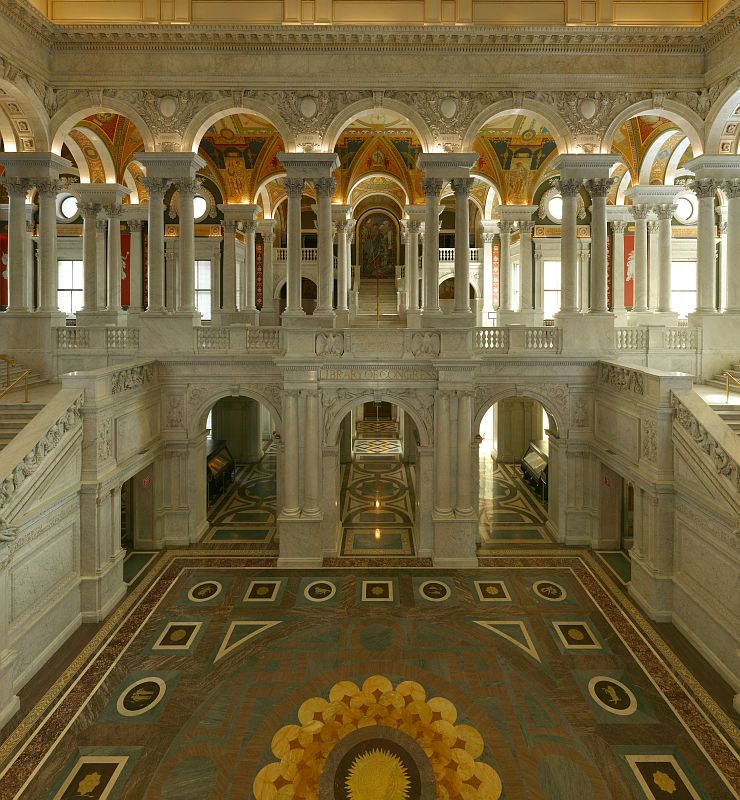 Shenandoah National Park is long and narrow, running north-south along a section of the Blue Ridge Mountains. The park’s best known feature is Skyline Drive which runs 105 miles along the crest of the mountain ridge. You can enter the park in four locations, two at the park’s northern and southern tips and two in the middle which essentially divide the park into thirds. The Rockfish Gap entrance is less than an hour from campus and accessible where I-64 crosses Afton mountain. There is a $15 fee per vehicle to enter the park.
Shenandoah National Park is long and narrow, running north-south along a section of the Blue Ridge Mountains. The park’s best known feature is Skyline Drive which runs 105 miles along the crest of the mountain ridge. You can enter the park in four locations, two at the park’s northern and southern tips and two in the middle which essentially divide the park into thirds. The Rockfish Gap entrance is less than an hour from campus and accessible where I-64 crosses Afton mountain. There is a $15 fee per vehicle to enter the park. As you travel along Skyline Drive pay attention to the mileposts on the west side of the road which can help you locate areas of interest. The mileposts are numbered highest on the southern end of the park, beginning at 105 and declining as you head north.
As you travel along Skyline Drive pay attention to the mileposts on the west side of the road which can help you locate areas of interest. The mileposts are numbered highest on the southern end of the park, beginning at 105 and declining as you head north.Traveling along at the 35 mph speed limit it takes about three hours to travel the entire length of the park on a clear day, but can be slightly more on crowded days. Rather than attempt to drive the entire length of the park, The Roaming Roan suggests a more relaxing drive along one of the three sections.
The middle section is often the least crowded for those travelling south to north. Not only does this section have great hiking trails, but it also contains the largest developed area, Big Meadows at milepost 51. There you can find a visitor’s center, gift shop, restaurant, service station, and campground.
 Maximize your experience by stopping to enjoy the amazing views at any of the 75 overlooks. The Shenandoah Valley lies to the west and the farming areas of the piedmont to the east. If you want a more complete experience, embark on a short hike. Shenandoah National Park has over 500 miles of trails with 101 miles as part of the Appalachian Trail. TRR recommends Stony Man Mountain, a 30 minute moderate climb of less than a mile along the Appalachian Trail that ends with a beautiful view at 4,011 feet. The trail can be accessed from the Skyland area at milepost 42.
Maximize your experience by stopping to enjoy the amazing views at any of the 75 overlooks. The Shenandoah Valley lies to the west and the farming areas of the piedmont to the east. If you want a more complete experience, embark on a short hike. Shenandoah National Park has over 500 miles of trails with 101 miles as part of the Appalachian Trail. TRR recommends Stony Man Mountain, a 30 minute moderate climb of less than a mile along the Appalachian Trail that ends with a beautiful view at 4,011 feet. The trail can be accessed from the Skyland area at milepost 42.If you plan your time properly, you can combine your trip to Shenandoah National Park with a stop at the largest and most popular caverns in eastern America. Luray Caverns are located half way between Skyline Drive and I-81. Exit the park via US 211 near milepost 32 and head west for ten minutes following the prominent signs.
 Luray Caverns are an amazing sight that is well worth the cost of admission ($19 for adults). You enter the caverns through a tight staircase before things open up into huge stone cathedrals. Follow the paved pathways through beautifully lit rooms, including one where the ceiling is over ten stories high! Various minerals create magnificent colors in the limestone geologic formations including towering columns, gravity-defying stalactites, and paper thin stone curtains. Other rooms hold mirror-like water pools reflecting the beauty above.
Luray Caverns are an amazing sight that is well worth the cost of admission ($19 for adults). You enter the caverns through a tight staircase before things open up into huge stone cathedrals. Follow the paved pathways through beautifully lit rooms, including one where the ceiling is over ten stories high! Various minerals create magnificent colors in the limestone geologic formations including towering columns, gravity-defying stalactites, and paper thin stone curtains. Other rooms hold mirror-like water pools reflecting the beauty above. The hour-long walking tour travels 1.25 miles through the caverns while tour guides enhance the experience with historical anecdotes and scientific explanations of the caverns. The culminating point of the tour is the playing of the world's only Stalacpipe Organ that plays incredible music by tapping on the natural formations.
The hour-long walking tour travels 1.25 miles through the caverns while tour guides enhance the experience with historical anecdotes and scientific explanations of the caverns. The culminating point of the tour is the playing of the world's only Stalacpipe Organ that plays incredible music by tapping on the natural formations.Returning home from Luray Caverns takes less than two hours, but is best broken up with a stop in Harrisonburg for dinner. As you enjoy your meal, recall your beautiful day atop Skyline Drive in Shenandoah National Park and below the ground in Luray Caverns.















